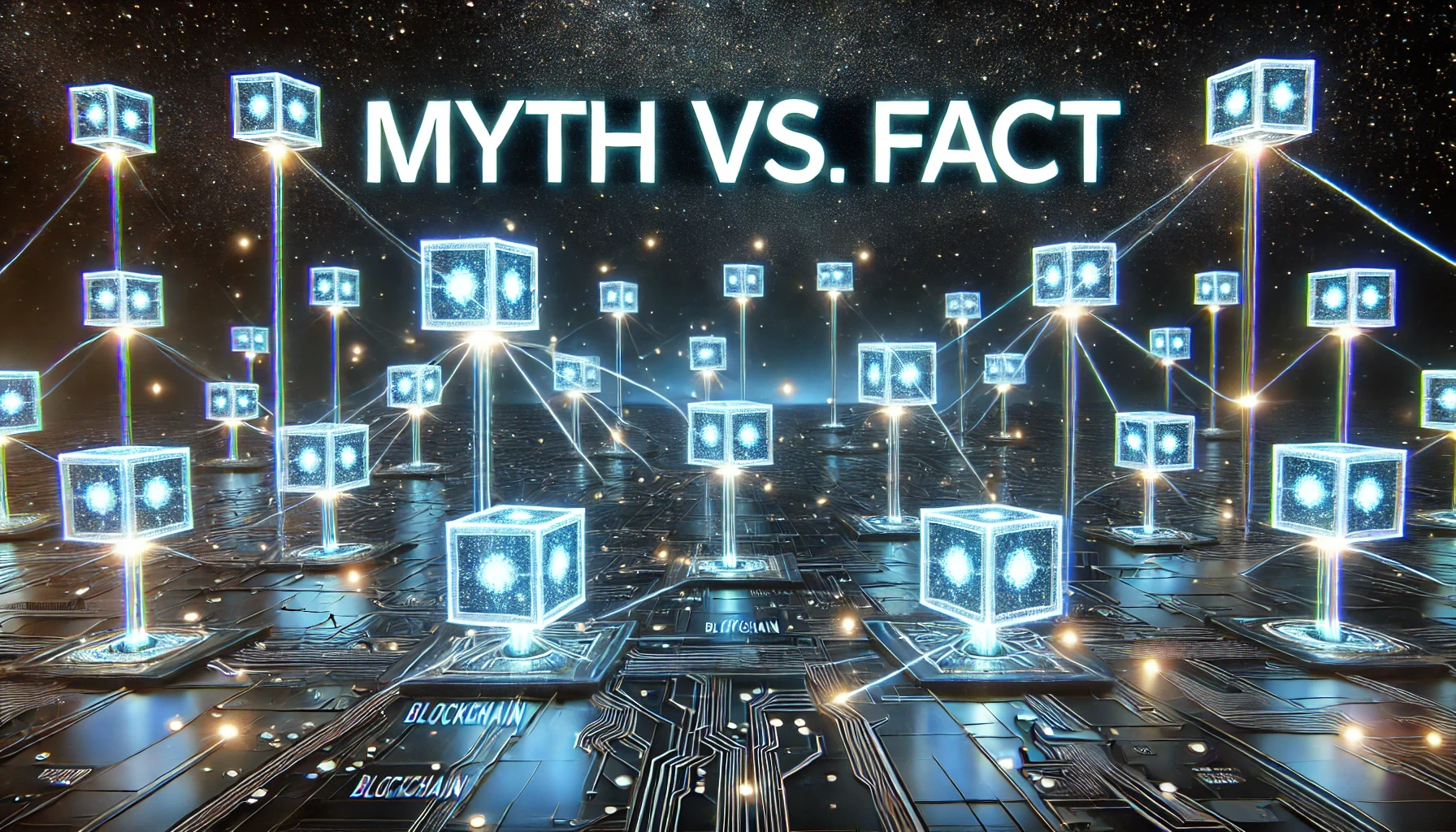Myth 1: Blockchain and Bitcoin Are the Same
The Truth:
Bitcoin and blockchain are not synonymous. Bitcoin is a cryptocurrency, while blockchain is the technology that powers it. Blockchain serves as the underlying ledger that records Bitcoin transactions, but its applications extend far beyond cryptocurrencies.
Examples:
Supply Chain Management: Companies like Walmart and IBM use blockchain to improve traceability of goods, ensuring transparency from farm to table.
Healthcare: Blockchain secures patient data, allowing only authorized parties to access sensitive information.
Voting Systems: Blockchain can ensure election transparency by recording votes immutably.
Blockchain is the foundation for cryptocurrencies but is not limited to them.
Myth 2: Blockchain Is Completely Anonymous
The Truth:
Blockchain transactions are pseudonymous, not anonymous. Wallet addresses are strings of alphanumeric characters that don't directly reveal user identities. However, with blockchain analytics, transactions can often be linked to real-world entities.
Examples:
Bitcoin’s Transparency: Every Bitcoin transaction is recorded on the blockchain, and addresses can sometimes be tied to individuals through KYC (Know Your Customer) processes.
Monero and Zcash: These privacy-focused blockchains enhance anonymity by obfuscating transaction details.
Blockchain offers privacy but not absolute anonymity unless supplemented by privacy-focused tools.
Myth 3: Blockchain Is 100% Secure
The Truth:
Blockchain’s decentralized and cryptographic design makes it highly secure, but it is not invincible. Potential vulnerabilities include:
51% Attacks: If a single entity controls more than half the network’s computational power, they can manipulate transactions.
Smart Contract Bugs: Errors in coding smart contracts can lead to hacks, as seen in the infamous DAO hack on Ethereum.
Private Key Management: Losing a private key can result in permanent loss of funds.
Examples:
Ethereum Classic 51% Attack (2020): A coordinated attack resulted in double-spending and significant losses.
Parity Wallet Bug (2017): A coding error froze over $280 million worth of Ethereum.
While blockchain is highly secure, proper protocols and safeguards are essential.
Myth 4: Blockchain Is Only for Techies and Coders
The Truth:
Blockchain adoption is no longer confined to the tech-savvy. User-friendly wallets, exchanges, and applications make it accessible to everyone.
Examples:
Coinbase and Binance: These platforms provide intuitive interfaces for buying, selling, and managing cryptocurrencies.
DeFi Platforms: Protocols like Aave and Uniswap enable users to earn interest or trade without needing technical expertise.
You don’t need to be a coder to use blockchain; modern tools make it accessible to non-technical users.
Myth 5: Blockchain Is Only Useful for Cryptocurrencies
The Truth:
Cryptocurrencies are the most well-known application of blockchain, but the technology has diverse uses across industries.
Examples:
Logistics: FedEx uses blockchain to enhance package tracking and resolve disputes.
Real Estate: Propy facilitates property sales through blockchain, reducing paperwork and fraud risks.
Digital Identity: Microsoft’s ION project uses blockchain for decentralized identity verification.
Blockchain applications extend far beyond cryptocurrencies, impacting industries worldwide.
Myth 6: All Blockchains Are the Same
The Truth:
There are multiple types of blockchains, each with unique features and use cases.
Types of Blockchains:
Public Blockchains: Open to anyone (e.g., Bitcoin, Ethereum).
Private Blockchains: Restricted access, often used by enterprises (e.g., Hyperledger).
Consortium Blockchains: Controlled by a group of organizations (e.g., R3 Corda).
Hybrid Blockchains: Combine features of public and private blockchains (e.g., Dragonchain).
Examples:
Bitcoin: Focused on decentralization and security.
Hyperledger Fabric: Designed for enterprise-level applications.
Ripple: Optimized for cross-border payments.
Blockchain is not a one-size-fits-all technology.
Myth 7: Blockchain Is Too Expensive to Implement
The Truth:
The cost of implementing blockchain has decreased significantly due to open-source solutions and SaaS models. While initial setup can be expensive for large-scale projects, the long-term cost savings often outweigh the investment.
Examples:
IBM Blockchain Platform: Offers scalable blockchain-as-a-service solutions.
VeChain: Provides affordable supply chain tracking solutions for businesses.
Blockchain implementation costs are becoming more manageable, especially with scalable solutions.
Myth 8: Blockchain Uses Too Much Energy
The Truth:
While Bitcoin’s proof-of-work (PoW) consensus is energy-intensive, many blockchains use energy-efficient consensus mechanisms like proof-of-stake (PoS).
Examples:
Ethereum 2.0: Transitioned to PoS, reducing energy consumption by over 99%.
Solana: Uses a highly efficient Proof of History (PoH) mechanism.
Not all blockchains are energy-hungry; many are designed to be sustainable.
Myth 9: Blockchain Guarantees Data Accuracy
The Truth:
Blockchain ensures data integrity but cannot guarantee the accuracy of the data entered. "Garbage in, garbage out" still applies.
Examples:
Supply Chain Tracking: If a supplier uploads false data, blockchain cannot verify its validity.
Voting Systems: Voter fraud can occur if identity verification is weak before inputting data.
Blockchain preserves data integrity, but human errors in data entry remain a challenge.
Myth 10: Blockchain Will Replace Traditional Databases
The Truth:
Blockchain and traditional databases serve different purposes. While blockchain excels in transparency, immutability, and decentralization, traditional databases are better suited for high-speed, large-scale data operations.
Examples:
Blockchain for Audits: Immutable records ensure trust in financial reporting.
Databases for Transactions: Banks use relational databases for quick processing of high volumes.
Blockchain complements traditional databases rather than replacing them.
Blockchain technology is a transformative innovation, but understanding its true potential requires separating myths from reality. By debunking these common misconceptions, we hope to shed light on how blockchain works, its benefits, and its limitations. Whether you're a skeptic or an enthusiast, knowledge is key to navigating the blockchain space wisely.
